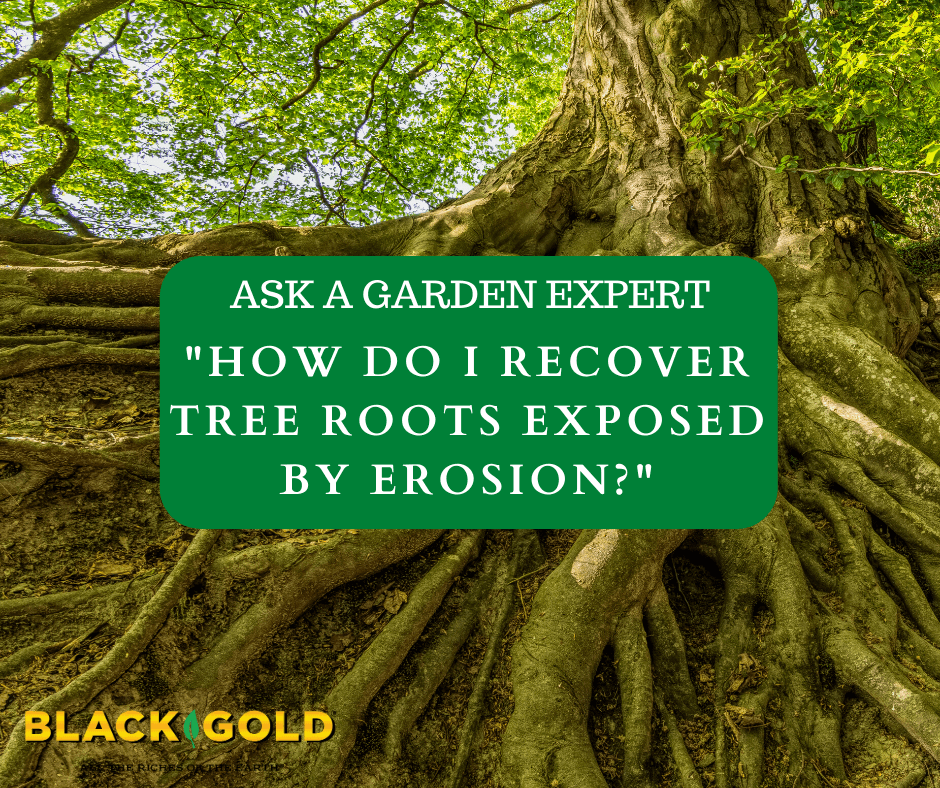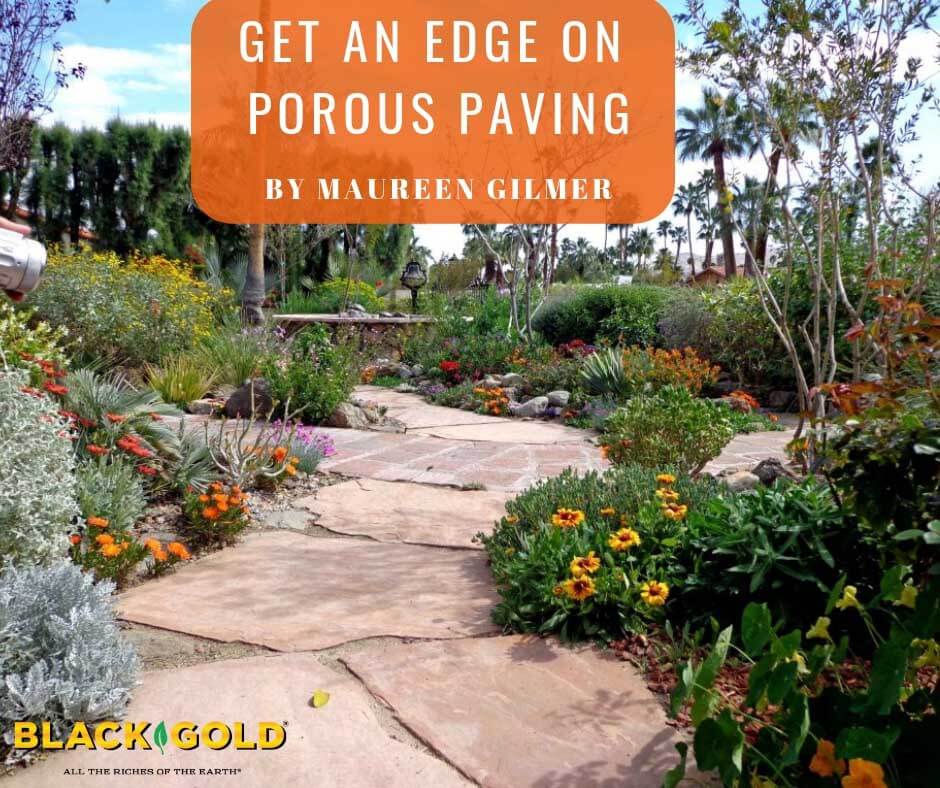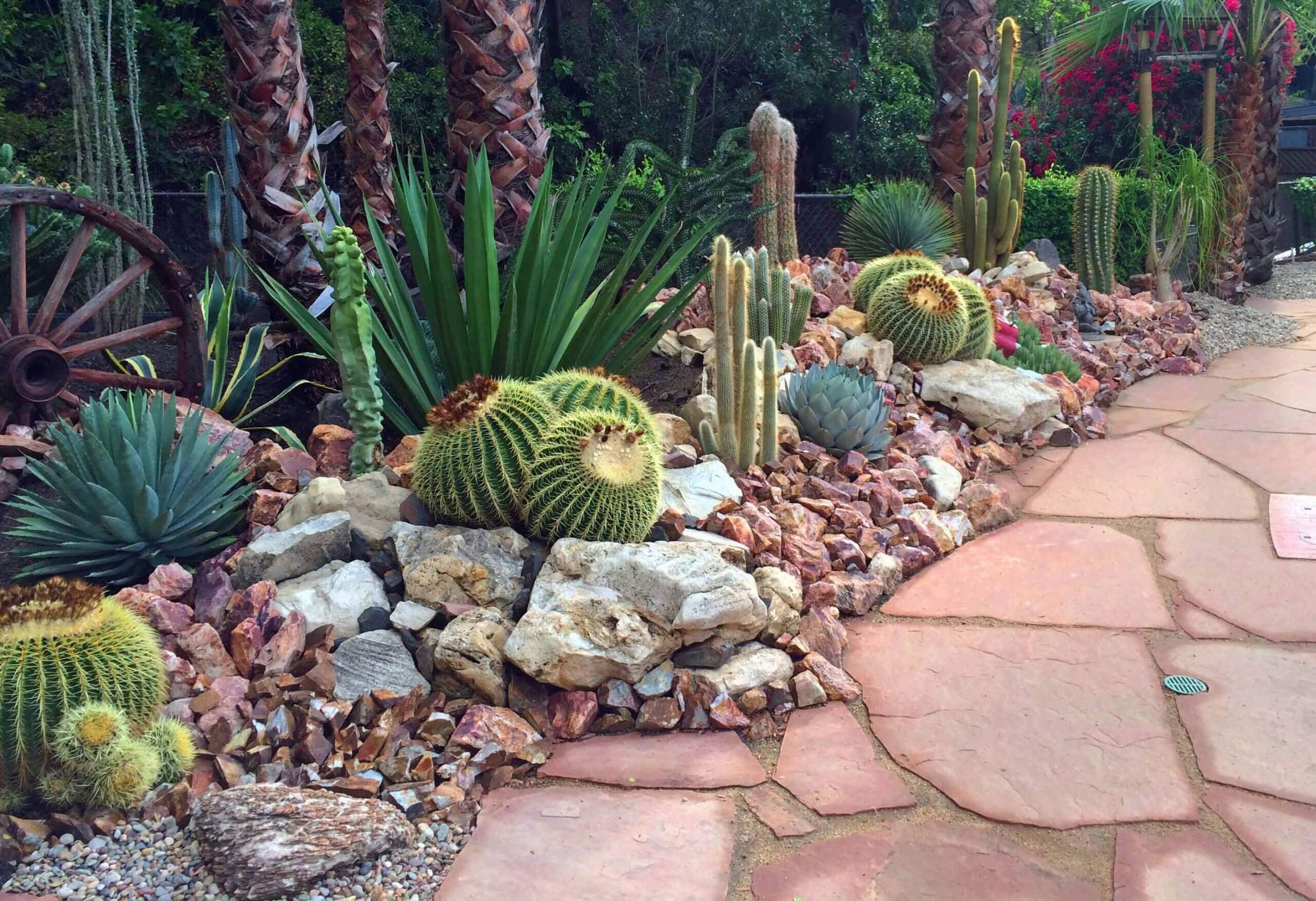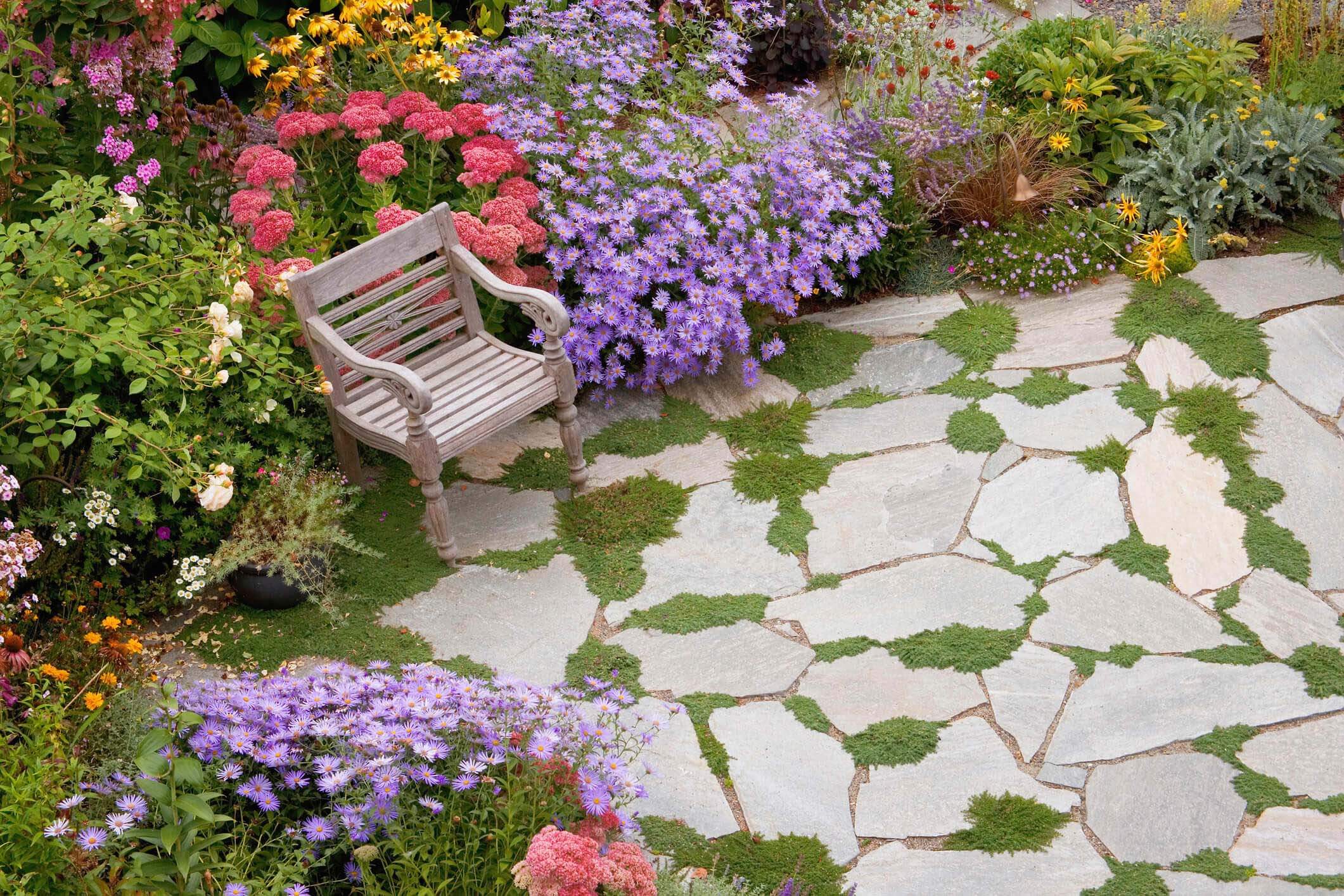
“I have tree roots that have been exposed near the ground because of soil erosion. Should I try to recover with soil or leave it be? Will it kill the tree? I think they are the roots of a very large willow oak. There is also a very large poplar tree close by, too.” Question from Richard of Winston Salem, North Carolina
Answer: Extensive root exposure can be damaging to trees, so I recommend restoring the eroded area. Exposed, large woody roots are not a problem, but the broad exposure of smaller feeder roots can cause trouble and indicates a severe erosion problem.
Different trees can tolerate different levels of root-soil cover. Willow oak (Quercus phellos) has a shallow root zone and should not be covered with a thick layer of soil. Two to three inches of soil over the layer of smaller roots should be enough. Poplars have large, extensive root systems and are less prone to damage from high levels of erosion. Still, erosion is always troublesome in the landscape and should be stopped. It can also cause tree instability and make them far more prone to falling during storms.
Here are my recommendations for managing your erosion and tree-root exposure problem.
- Identify and attempt to stop the source of erosion. If you can identify the water source, you can often divert the water. Your method of diversion would depend on the source. Feel free to provide more information regarding the source, so I can provide specific solutions.
- Cover the exposed feeder roots with at least 2 to 3 inches of topsoil and press it down. We also recommend mixing a good organic amendment into the topsoil, such as Black Gold Canadian Sphagnum Peat Moss.
- Apply a straw mat or burlap erosion mat to keep the soil in place.
- Plant plugs of groundcover for dry shade between the matting. A good groundcover layer will hold the soil in place as it becomes established (list below).
- Keep the plugs watered and cared for until they begin to really grow and spread–around two to three months.
There are lots of good groundcovers for dry shade that reduce or stop erosion. These include creeping wire vine (Muehlenbeckia axillaris ‘Nana’, light shade, Zones 6-10), evergreen vinca (Vinca minor, shade, Zones 4-9), dwarf mondo grass (Ophiopogon japonicus ‘Nana’, shade, Zones 6-11), golden sweet flag (Acorus gramineus ‘Ogon’, shade to part shade, Zones 5-11), and the evergreen creeping plum yew (Cephalotaxus harringtonia ‘Prostrata’, Zones 6-9), which I highly recommend.
If you like native groundcovers, consider wild ginger (Asarum canadense, shade, Zones 3-8), Allegheny spurge (Pachysandra procumbens, shade, Zones 4-9), and the pretty green-and-gold (Chrysogonum virginianum, part sun to shade, Zones 5-8).
I hope that these solutions help!
Jessie Keith
Black Gold Horticulturist





